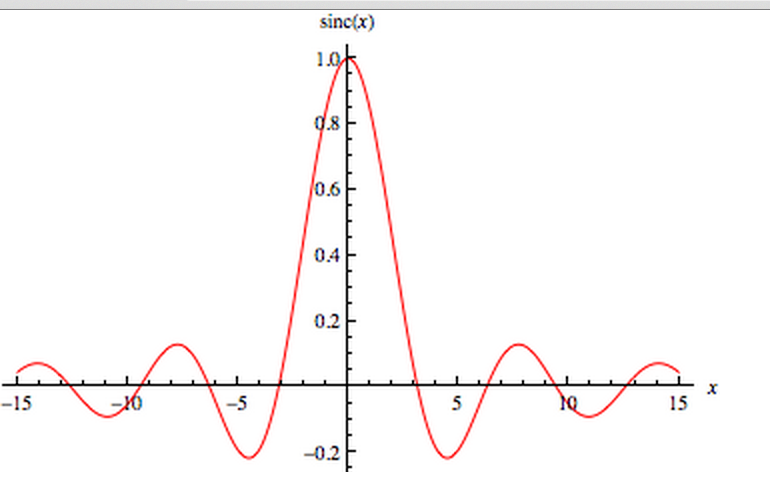Blackbodies are nice because they're such simple objects. Their outward appearance is entirely determined by their temperature. If there were cows in space, astronomers would imagine them to be spherical blackbodies (and seriously, it wouldn't be a bad approximation). In this exercise we'll take advantage of the relative simplicity of blackbodies to derive some useful expressions that you'll use during this term, and throughout the your astronomy career.
Questions:
In astronomy, it is often useful to deal with something called the "bolometric flux," or the energy per area per time, independent of frequency. Integrate the blackbody flux $F_{\nu}(T)$ over all frequencies to obtain the bolometric flux emitted from a blackbody, F(T). You can do this by substituting the variable $u = \frac{h{\nu}}{kT}$. This will allow you to split things into a temperature-dependent term, and a term comprising an integral over all frequencies. However, rather than solving for the integral, just set the integral and all constants equal to a new, single constant $\sigma$, which is also known as the Stefan-Boltzmann constant. If you're really into calculus, go ahead and show that $\sigma \approx 5.7 \times 10^{-5} erg s^{-1} cm^{-2} K^{-4}$. Otherwise, commit this number to memory.
In order to start off this derivation, let's look at the equation for the intensity of radiation emitted from a blackbody, which is given by the following equation:
\begin{align}
I_{\nu}(T) = \frac{2{\nu}^2}{c^2} \cdot \frac{h{\nu}}{e^{\frac{h{\nu}}{kT}} - 1}
\end{align}
Now that is a complicated equation! Let's think about what it means. This equation shows the energy per time, per area, per frequency, per solid angle. However, we are looking for the "bolometric flux", which is energy per area, per time, independent of frequency. So the equation we have for intensity, $I_{\nu}(T)$ involves a "per frequency" and "per solid angle" component. In order to get rid of these, let's first think about the "solid angle". You can think of a solid angle as a small patch of area on the surface of a sphere. Since a blackbody emits radiation isotropically from every point, you can integrate $I_{\nu}(T)$ over all the solid angles to get the "blackbody flux", $F_{\nu}(T)$. Since we are dealing with a spherical body, you have to integrate over the $\theta$ dimension, as well as the $\phi$ dimension, and take into account the fact that the "solid angle" gets smaller the higher the latitude, which is represented by $\sin(\theta)$. Also, since we are dealing with isotropic radiation, we have to consider only the radiation that is facing us, which can be determined by the $\cos(\theta)$, the component of the radiation that is actually affecting us. Therefore, in order to get the flux of the blackbody:
\begin{align}
F_{\nu}(T) &= \int_{0}^{2 \pi} \int_{0}^{\frac{\pi}{2}} I_{\nu}(T) \cos \theta \sin \theta d\theta d\phi\\
F_{\nu}(T) &= \pi I_{\nu}(T)
\end{align}
Now, in order to get rid of the "per frequency" part of the the flux equation $F_{\nu}(T)$, and get the "bolometric flux" $F(T)$, we can integrate over all the frequencies possible. We can use the variable $u = \frac{h{\nu}}{kT}$ to help with the integration.
\begin{align}
F(T) &= \int_{0}^{\infty} F_{\nu}(T) d{\nu}\\
&= \int_{0}^{\infty} \pi I_{\nu}(T) d{\nu}\\
&= \int_{0}^{\infty} \pi \cdot \frac{2{\nu}^2}{c^2} \cdot \frac{h{\nu}}{e^{\frac{h{\nu}}{kT}} - 1} d{\nu}\\
&= \frac{2 \pi k^4 T^4}{c^2 h^2} \int_{0}^{\infty} \frac{u^3}{e^u - 1} du\\
&= \frac{2 \pi^5 k^4 T^4}{15 c^2 h^3}\\
F(T) &= \sigma T
\end{align}
The value of $\sigma = 5.7 \times 10^{-5} erg s^{-1} cm^{-2} K^{-4}$ is the coefficient for $T$, also known as the Stefan-Boltzmann constant.
The Wien Displacement Law: Convert the units of the blackbody intensity from $B_{\nu}{T}$ to $B_{\lambda}(T)$. IMPORTANT: Remember that the amount of energy in a frequency interval $d{\nu}$ has to be exactly equal to the amount of energy in the corresponding wavelength interval $d \lambda$.
Okay, so we have the intensity of a blackbody given by $I_{\nu}(T)$, which can also be represented by $B_{\nu}(T)$. However, $B_{\nu}(T)$ represents the intensity per a given interval of frequency, $\nu$. However, we are looking for the intensity of a blackbody per a given wavelength $\lambda$, represented by $B_{\lambda}(T)$.
Since we are told that the amount of energy in a given frequency interval $d_{\nu}$ is equal to the amount of energy in the corresponding wavelength interval $d \lambda$, we can say that $B_{\nu}(T) d{\nu} = B_{\lambda}(T) d \lambda$. Solving for $B_{\lambda}(T)$, we get:
\begin{align}
B_{\lambda}(T) = B_{\nu}(T) \frac{d \nu}{d \lambda}
\end{align}
Also, we know that frequency and wavelength can be related by the equation, $c = \nu \lambda$. Solving for $\nu$ and taking it's derivative with respect to $d \lambda$, we get:
\begin{align}
\nu &= \frac{c}{\lambda}\\
\frac{d\nu}{d\lambda} &= -\frac{c}{{\lambda}^2}
\end{align}
Substituting for both $\frac{d\nu}{d\lambda}$ and $B_{\nu}(T)$, you get:
\begin{align}
B_{\lambda}(T) &= B_{\nu}(T) \frac{d \nu}{d \lambda}\\
&= - \frac{2{\nu}^2 }{c^2} \frac{h\nu}{e^{\frac{h\nu}{kT}} - 1} \cdot \frac{c}{{\lambda}^2}\\
&= -\frac{2h{\nu}^3} {c {\lambda}^2 \left( e^{\frac{h\nu}{kT}} - 1 \right) }\\
&= -\frac{2h{\nu}^2} {{\lambda}^3 \left( e^{\frac{h\nu}{kT}} - 1 \right) }\\
&= -\frac{2hc^2} {{\lambda}^5 \left( e^{\frac{h\nu}{kT}} - 1 \right) }
\end{align}
Therefore, $B_{\lambda}(T) = -\frac{2hc^2} {{\lambda}^5 \left( e^{\frac{h\nu}{kT}} - 1 \right) }$
Derive an expression for the wavelength $\lambda_{\text{max}}$ corresponding to the peak of intensity distribution at a given temperature T. (HINT: How do you find the maximum of a function? Once you do this, again, substitute $u = \frac{hv}{kT}$). The expression you end up with will be transentental, but you can solve it easily to first order, which is good enough for this exercise.
In order to find the $\lambda_{max}$ corresponding to the peak intensity distribution at a given temperature T, we can find the maximum of the blackbody intensity function with respect to the wavelength $\lambda$. In order to find the maximum, we can set the derivative of $B_{\lambda}(T)$ with respect to wavelength $\lambda$ to 0. It is worth noting that you can substitute $u = \frac{h\nu}{kT}$. You can also use the relationship between frequency and wavelength, $\nu = \frac{c}{\lambda}$ and substitute it into $u = \frac{h\nu}{kT}$ to get $\lambda = \frac{hc}{ukT}$. This will help in the derivation to find the maximum:
\begin{align}
\frac{dB_{\lambda}(T)}{d\lambda} = 0\\
\frac{d}{d\lambda}\left( -\frac{2hc^2} {{\lambda}^5 \left( e^{\frac{h{\nu}}{kT}} - 1 \right) }\right) = 0\\
\frac{d}{du} \left( \frac{2hc^2}{\left(\frac{hc}{ukT}\right)^5 (e^u - 1)} \right) = 0\\
\frac{d}{du} \left( \frac{2u^5k^5T^5}{h^4c^3\left(e^u - 1\right)} \right) = 0
\end{align}
Here, we can drop the constants, so that we're left with a derivation only in terms of $u$:
\begin{align}
\frac{d}{du} \frac{u^5}{e^u - 1} = 0\\
\frac{5u^4(e^u -1) - u^5(e^u)}{(e^u - 1)^2} = 0\\
5(e^u - 1) - ue^u = 0\\
5e^u - 5 - ue^u = 0\\
(5-u)e^u = 5
\end{align}
Now, in order to get the maximum value, we need to solve for $u$. We can use the Taylor approximation of $e^u = 1 + u$ to approximate the value of $u$:
\begin{align}
(5-u)(u + 1) \approx 5\\
4u - u^2 + 5 \approx 5\\
u^2 - 4u \approx 0\\
u - 4 \approx 0\\
u \approx 4.
\end{align}
To get the maximum wavelength $\lambda_{max}$, we can substituting the value of $u$ into the equation $\lambda = \frac{hc}{ukT}$, to get :
\begin{align}
\lambda_{max} = \frac{hc}{4kT}
\end{align}
The Rayleigh-Jeans Tail: Next, let's consider photon energies that are much smaller than the thermal energy. Use a first-order Taylor expansion on the term $e^{\frac{h{\nu}}{kT}}$ to derive a simplified form of $B_{\nu}(T)$ in this low-energy regime. (HINT: The Taylor expansion of $e^x \approx 1 + x$).
The term $e^{\frac{h\nu}{kT}}$ can be simplified using the first order Taylor approximation such that:
\begin{align}
e^{\frac{h\nu}{kT}} \approx 1 + \frac{h\nu}{kT}
\end{align}
We can then simplify the equation for radiation emitted by a blackbody, $B_{\nu}(T)$ as such:
\begin{align}
B_{\nu}(T) &= \frac{2{\nu}^2}{c^2} \cdot \frac{h{\nu}}{e^{\frac{h{\nu}}{kT}} - 1}\\
&\approx \frac{2{\nu}^2}{c^2} \cdot \frac{h{\nu}}{\frac{h\nu}{kT}}\\
&\approx \frac{2{\nu}^2kT}{c^2}
\end{align}
This simplified version of intensity $B_{\nu}(T) \approx \frac{2{\nu}^2kT}{c^2}$ is an approximation for energies that are much smaller than thermal radiation, often known as the Rayleigh-Jeans Tail.
Write an expression for the total power output of a blackbody with a radius R, starting with the expression for $F_{\nu}$. This total energy output per unit time is also known as the bolometric luminosity, $L$.
The total energy output per time, also known as bolometric luminosity. We know from part 1 that the bolometric flux of a blackbody is given in terms of energy per area per time. Therefore, in order to get the bolometric luminosity, we need to figure out the surface area over which the blackbody is radiating energy from and multiply it by the bolometric flux to get rid of the "per area" component. Since we approximate all blackbodies to a spherical shapes, the surface area over which the blackbody is radiating is given by $4\pi R^2$.
Therefore, the bolometric luminosity, $L$ is given by:
\begin{align}
L &= \text{Surface Area} \cdot F(T)\\
L &= 4 \pi R^2 \sigma T^4
\end{align}























